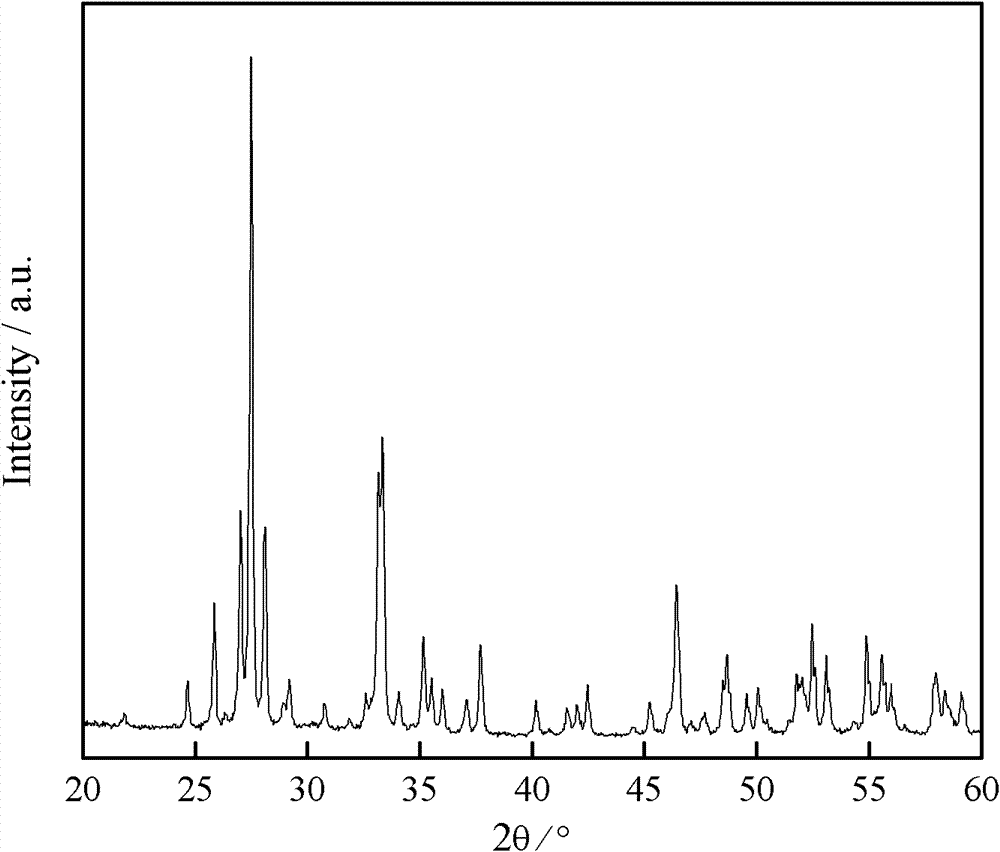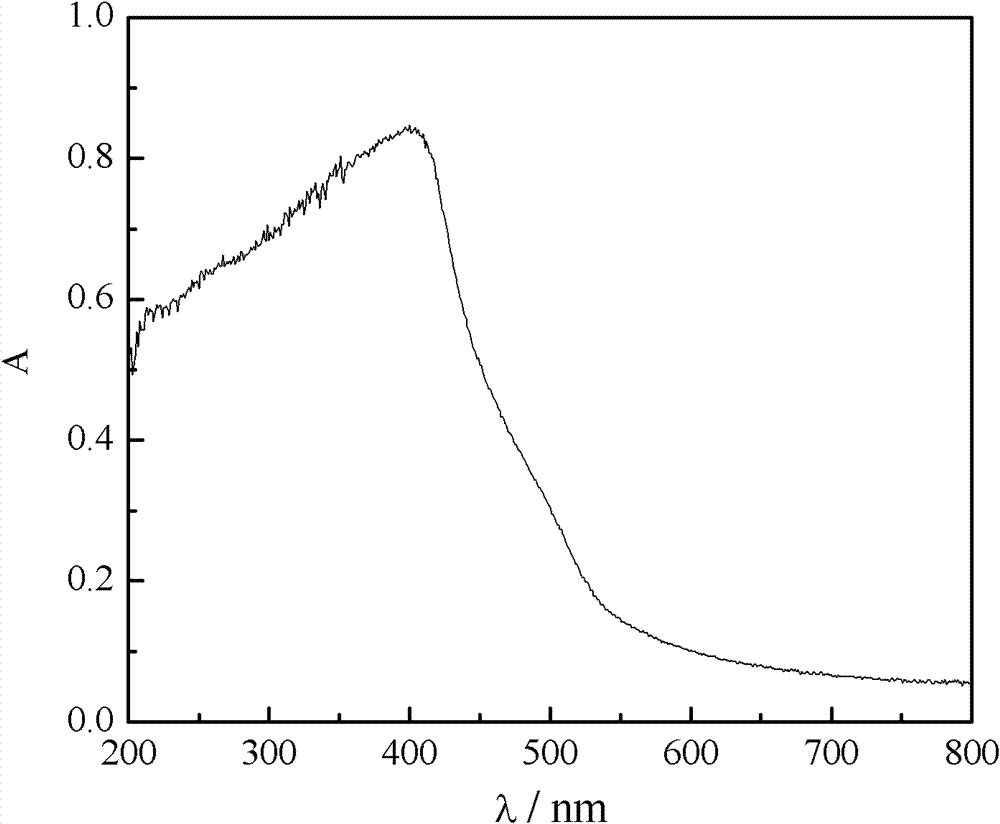Visible-light response calcium-bismuth composite oxide catalyst and preparation method thereof
A technology of composite oxides and catalysts, which is applied in the direction of catalyst activation/preparation, metal/metal oxide/metal hydroxide catalysts, physical/chemical process catalysts, etc. Complicated process and other issues, to achieve high commercial application prospects, good visible light degradation activity, and simple preparation method
- Summary
- Abstract
- Description
- Claims
- Application Information
AI Technical Summary
Problems solved by technology
Method used
Image
Examples
Embodiment 1
[0016] Weigh 9.799g of bismuth nitrate, add 4mL of concentrated nitric acid and 20mL of deionized water, stir and dissolve to obtain a bismuth nitrate solution. Weigh 2.385g of calcium nitrate, add 10mL of deionized water, stir and dissolve to obtain a calcium nitrate solution. Weigh 1.468g of EDTA, add 2mL of 35% ammonia water to dissolve to obtain EDTA solution. The calcium nitrate solution was then added dropwise to the bismuth nitrate solution with stirring, followed by the EDTA solution. Add 35% ammonia water dropwise to adjust the pH to 8 to form a white precipitate. Stir and age for 5 hours and filter with suction. The obtained solid is dried in an oven at 120°C for 12 hours, taken out and ground, and finally roasted in a muffle furnace at 500°C for 12 hours. Calcined CaBi at 500°C after natural cooling 7 o 11.5 catalyst.
Embodiment 2
[0018] Weigh 9.799g of bismuth nitrate, add 4mL of concentrated nitric acid and 20mL of deionized water, stir and dissolve to obtain a bismuth nitrate solution. Weigh 2.385g of calcium nitrate, add 10mL of deionized water, stir and dissolve to obtain a calcium nitrate solution. Weigh 1.468g of EDTA, add 2mL of 35% ammonia water to dissolve to obtain EDTA solution. The calcium nitrate solution was then added dropwise to the bismuth nitrate solution with stirring, followed by the EDTA solution. Add 35% ammonia water dropwise to adjust the pH to 8 to form a white precipitate. Stir and age for 5 hours and filter with suction. The obtained solid is dried in an oven at 120°C for 12 hours, taken out and ground, and finally roasted in a muffle furnace at 550°C for 12 hours. Calcined CaBi at 550°C after natural cooling 7 o 11.5 catalyst.
Embodiment 3
[0020] Weigh 9.799g of bismuth nitrate, add 4mL of concentrated nitric acid and 20mL of deionized water, stir and dissolve to obtain a bismuth nitrate solution. Weigh 2.385g of calcium nitrate, add 10mL of deionized water, stir and dissolve to obtain a calcium nitrate solution. Weigh 1.468g of EDTA, add 2mL of 35% ammonia water to dissolve to obtain EDTA solution. The calcium nitrate solution was then added dropwise to the bismuth nitrate solution with stirring, followed by the EDTA solution. Add 35% ammonia water dropwise to adjust the pH to 8 to form a white precipitate. Stir and age for 5 hours and then suction filter. The obtained solid is dried in an oven at 120°C for 12 hours, taken out and ground, and finally roasted in a muffle furnace at 600°C for 12 hours. Calcined CaBi at 600°C after natural cooling 7 o 11.5 catalyst.
PUM
 Login to View More
Login to View More Abstract
Description
Claims
Application Information
 Login to View More
Login to View More - R&D
- Intellectual Property
- Life Sciences
- Materials
- Tech Scout
- Unparalleled Data Quality
- Higher Quality Content
- 60% Fewer Hallucinations
Browse by: Latest US Patents, China's latest patents, Technical Efficacy Thesaurus, Application Domain, Technology Topic, Popular Technical Reports.
© 2025 PatSnap. All rights reserved.Legal|Privacy policy|Modern Slavery Act Transparency Statement|Sitemap|About US| Contact US: help@patsnap.com



